The WordPress blogging platform has jumped the shark.
Future musings of a seriously whimsical or whimsically serious nature can be found here:
https://whimsicallyserious.blogspot.com/

The WordPress blogging platform has jumped the shark.
Future musings of a seriously whimsical or whimsically serious nature can be found here:
https://whimsicallyserious.blogspot.com/
[Maybe one day and many edits later this will grow up to be a Real Blog Post but for now…]
This is the dumbest and the best thing about me, but I’ll always hope.
Kimmy Schmidt says you can handle anything for ten seconds at a time, and new year’s is kind of like that. We are so resilient. We can handle anything for one year at a time.
And then, with the relief of laying down a burden, or reaching a destination, we pick up and start again. With hope, ridiculous and utterly unfounded hope, to see what we can make of this new morning, these new days, this new year.
The time that is given to us.
I somehow expected that I would read more books this year, but I reached a fairly average number (for me) of 34 books for 2020. Partly I think this is because I traditionally get most of my reading time done on the train to/from work, and I haven’t caught a train since March. Much more time spent reading at home this year, for obvious reasons.
I also sunk a lot of hours into videogames this year, and I’ve stopped feeling bad about this because some of the stories told in game format rival some of the best books I’ve read; a particular shout-out this year to Subnautica and Outer Wilds, both of which were just perfect for 2020 (though I can’t explain why without ruining the excellent plot of both of them).
But this isn’t about 2020 games! Here’s my book list:
1. Love and the Platypus by Nicholas Drayson
Got this out from the library on a whim for the nice paperback cover. An Australian historical novel about one of the first biologists studying the mystery of platypus reproduction; also a sweet little love story, interesting female characters, and touches on the relationship between white settlers and the local population of Aboriginal people.
2. Dark Emu by Bruce Pascoe
I had been meaning to read this for a while, and finally borrowed Mum’s copy. In a roundabout way, it made me realise that the reason I want to travel in Europe is for the built history; not just the big important churches and chapels but the tiny old houses in anonymous towns in the south of France, the ancient stone fence lines criss-crossing the English countryside. And Dark Emu really highlighted for me the cruel irony of living in a country with the oldest and longest living human culture, and being so cut off from that history, because white settlers didn’t think the architecture or the agricultural systems of Australia’s original inhabitants were worth preserving. I kept wishing to myself that we’d been taught more of this in school.
3. The Children’s Book by A.S. Byatt
I’m not sure how to summarise such a vast book. The Goodreads summary suggests that it’s about a large cast of characters growing up in England in the Edwardian period, but it was about art and beauty and childhood and growing up and nothing I could quite put into words. It was beautiful and sweeping and personal and 600 pages long. The cover was pretty.
4. Clancy of the Undertow by Christopher Currie
Library book – YA. A girl growing up gay in an Australian country town. Pretty good. Pretty short.
5. The Secret Adversary by Agatha Christie
My grandmother, a huge Agatha Christie fan, loaned me about 5 of her favourite books. The old paperbacks are so ancient that the pages are brown and falling apart, the cover replaced by Smurfs contact paper, with Gran’s careful handwriting on the spine to note the title. Reading my first Agatha Christie was….. An Experience. “I enjoyed it,” as I said to Gran, “but if Agatha Christie was any more right-wing she would fall off the face of the planet.” A product of her time, of course.
6. A Closed and Common Orbit by Becky Chambers
A robot consciousness in a human body, and a girl who was raised almost single-handedly by a ship AI in the toughest of circumstances. I love Chambers’ warm and fuzzy science fiction, which really just uses the scifi elements to explore character and what it means to be ‘a person’.
7. Big Magic: Creative Living Beyond Fear by Elizabeth Gilbert
Borrowed from Leanne, this made for lovely holiday reading. As a writer who never writes anything because it won’t be as good on the page as it is in my head, I felt called out by this passage in particular:
[Some people] wear their perfectionism like a badge of honor, as if it signals high tastes and exquisite standards. But I see it differently. I think perfectionism is a just a high-end, haute couture version of fear. I think perfectionism is just fear in fancy shoes and a mink coat, pretending to be elegant when actually it’s just terrified. Because underneath that shiny veneer, perfectionism is nothing more than a deep existential angst that says, again and again, “I am not good enough and I will never be good enough.”
8. The Coming of the Whirlpool (Ship Kings, #1) by Andrew McGahan
I am completely fascinated by Andrew McGahan’s ability to make every single book he’s written completely and utterly different from anything else he’s ever written before. The guy was all over the map. This was the first book in his foray into young adult/fantasy fiction. The world of the Ship Kings was fairly interesting, but it didn’t quite grip me enough to commit to reading the rest of the series.
9. Too Much Lip by Melissa Lucashenko
I’d previously read Mullumbimby by this author and really enjoyed it, so got this from the library too. Her characters have such a strong voice. The use of plenty of Aboriginal words took a few chapters for me to really grasp (but easy to understand from context), and by the end of the book I found myself kind of thinking in the character’s voice. I think I liked this one even better than Mullumbimby.
10. War of the Worlds by H.G. Wells
I have a gorgeous hard-cover omnibus of all H.G. Wells’ fiction (complete with colour steam-punk illustrations), and I read this during lockdown because I was weirdly in the mood for something apocalyptic. H. G. Wells is awesome.
11. Still Writing: The Perils and Pleasures of a Creative Life by Dani Shapiro
I got this from the library because it had a cute cover. (Seriously, I should get that printed on a tshirt or something). I enjoyed it but have no memory of reading it, so chalk this one down to another instance of “I spend more time reading about writing than I do actually writing.”
12. Record of a Spaceborn Few by Becky Chambers
See #6 – I liked this but remember absolutely nothing about it.
13. The Hollow by Agatha Christie
Much better than the first Agatha Christie book that I read. So very, very English. Traditional sort of manor house whodunnit.
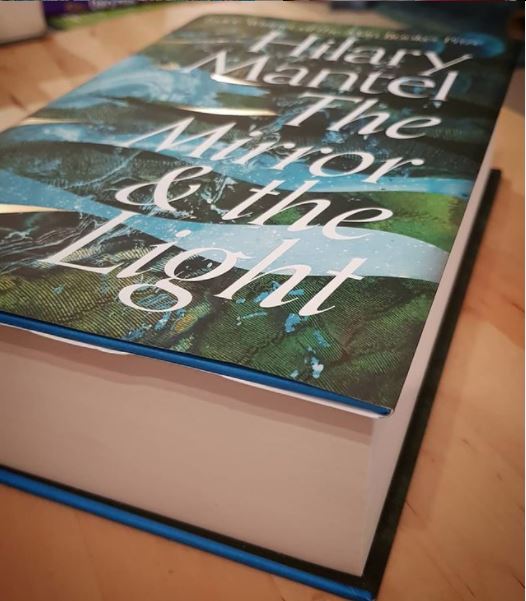 14. The Mirror & The Light by Hilary Mantel
14. The Mirror & The Light by Hilary Mantel
This was my longest book of the year, coming in at 883 pages. I specifically read it during Sydney’s weeks of hard lockdown (when I was working from home full time and could only go out for food or exercise), because I knew it was just too damn heavy to carry around in a handbag. This was the last in the Cromwell trilogy, and like the rest of them, it was exactly like falling into a strange dream, and living inside his head.
15. The Lost Arabs by Omar Sakr
I started following Omar on twitter a few years ago, so he is like a poet who is in fact A Real Life Actual Person to me (as dumb as that probably sounds). He’s awesome and this little book of poetry is exquisite.
16. Night Fishing by Vicki Hastrich
I loved this book of memoirs/essays. I am not a river person, but it made me want to go fishing.
17. Semiosis by Sue Burke
K recommended this to me; the best kind of thoughtful and weird scifi about symbiosis, a multi-generational human settlement and a sentient, talking plant.
18. Utopia Avenue by David Mitchell
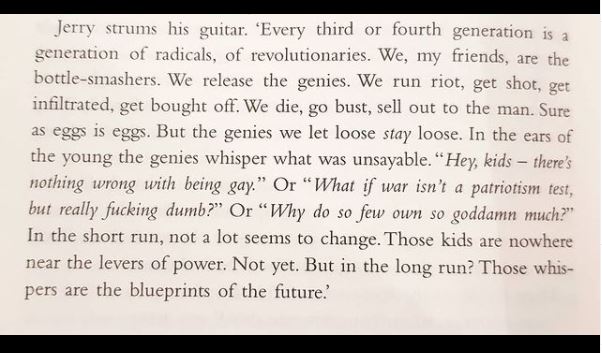
Considering this book is set in England (and America) in the psychedelic rock scene of the late 60s, it wasn’t quite as psychedelic as a lot of Mitchell’s other books (though there is one particular section that links back to The Thousand Autumns of Jacob de Zoet). A good edition to his universe.
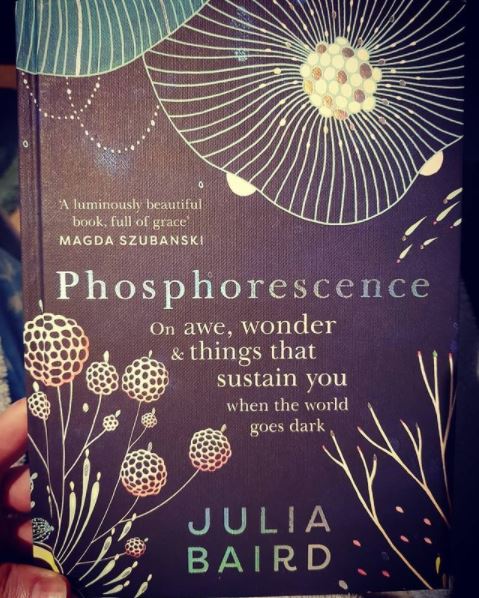 19. Phosphorescence: On awe, wonder and things that sustain you when the world goes dark by Julia Baird
19. Phosphorescence: On awe, wonder and things that sustain you when the world goes dark by Julia Baird
How could anyone ever resist something so shiny? Hard to tell from the photo but the beautiful hardback is embossed with holographic details. I loved the concept of this book, especially in 2020. The chapters about ocean swimming and the benefits of immersing ourselves in nature definitely made me want to get outside more often. I’ve seen phosphorescence in the wild three times – once walking along a beach, once while scuba diving, and the last time in the glow worm caves of New Zealand – and they are some of the most magical memories I have. There couldn’t be a more perfect metaphor for what we all need to cultivate in these times.
20. The Song of Achilles by Madeline Miller
I looked this up because I absolutely adored Circe, another retelling of Greek myth by this author, and Achilles was great as well. Although I think I liked Circe better, especially the ending (I don’t think it’s much of a spoiler to say that things didn’t end so well for Achilles…).
21. Network Effect (The Murderbot Diaries #5) by Martha Wells
The first full-length Murderbot after 4 novellas, and it was still not nearly long enough for my taste; I blew through it extremely fast and still wanted more. More please!
22. Eleanor Oliphant Is Completely Fine by Gail Honeyman
I don’t cope well with cringe or second-hand embarrassment, so I struggled a bit to warm up to Eleanor – she was just so socially unaware that it was a bit painful to read her at times. But of course I had to keep going to unravel what exactly had happened to her to make her the way she was, and I was glad I did.
23. Writing Down the Bones: Freeing the Writer Within by Natalie Goldberg

I’ve read this book about writing before (from the library) but took the opportunity to read through it again so I could annotate my personal copy. There was much enthusiastic underlining and asterisk-ing of my favourite passages. I think of the above quote very often.
24. The Glass Hotel by Emily St. John Mandel
Borrowed this from Bec (thanks Bec!). Emily St. John Mandel is an absolute marvel. This book revolves (theoretically) around the global financial crisis in the late 2000s, but it’s more about characters and absolutely exquisite writing that just drags you in.
25. There Was Still Love by Favel Parrett
A cute little book half set in Prague and half set in Melbourne, about children and home and migration. Not much plot but plenty of warm fuzzies.
26. The Waterboys by Peter Docker
Maybe the weirdest book I read this year, but not in a bad way. It’s a semi-futuristic look at an alternative history: what if when Captain Fremantle showed up on the west coast of Australia, he decided to join the Aboriginal people there and learn their way of life, instead of colonising and eradicating? In a UV-radiated and drought-stricken future, the ‘waterboys’ (a white man and his Aboriginal brother) fight against the powers of the East Australian Waterboard and dreamwalk through memories of the past. Trippy. Weird. Pretty great. Really would have liked more meaningful female characters, though.
27. Sky Legs by Irini Savvides
(YA). I read this as a teenager and remembered loving the parts of it set in the Blue Mountains, especially the Winter Magic festival (which I’ve always wanted to attend but never managed to get to). So when I went on a long weekend to the Mountains, this made a nice re-read.
28. The Tidal Zone by Sarah Moss
Each one of Sarah Moss’ excellent novels is about some aspect of parenthood, but this is the first I’ve read where it’s from the father’s perspective. It was interesting to see this take on the stay-at-home-spouse. The deep love for (and almost oppressive anxiety over) the child is still very much the focus here. As much as I adore this author, I feel like her books are almost too stressful to recommend to my friends who have kids… they shine with grief and love and worry. And also (in this one) sly references to the life of university academia, which made me chuckle.
29. The Animals In That Country by Laura Jean McKay
What if there was a pandemic that caused humans to be able to communicate with animals? Sounds like a fun romp and roadtrip-with-a-talking-dingo-riding-shotgun story until you’re going mad from the stray thoughts of every single bird in the air and bug in the ground. Weird, trippy, sad, Australian, great story that kind of fizzled at the end. I want to talk to a dingo.
30. Death Comes As The End by Agatha Christie
Agatha Christie: Ancient Egypt Edition! My favourite character was the wily grandmother who was too old and canny to put up with her son and her grandchildren’s bullshit. (When I told Gran this I think she just thought I was being a suck-up, but it’s true).
31. The Rich Man’s House by Andrew McGahan
See #8 for McGahan’s constant ability to write something completely different. This is a brick-sized book with an equally huge ‘what if?’; what if, rearing up from the ocean somewhat south of Tasmania, there was a mountain almost three times as tall as Mount Everest? Every second chapter of the book is a ‘non-fiction’ article about the discovery, geography, and history of the mountain, and the enigmatic billionaire who was the first to summit it. Hard to summarise without spoiling it; this was definitely my page-turner of the year.
32. On Earth We’re Briefly Gorgeous by Ocean Vuong
Like many well-written books, a bare-bones literal summary – something like “a gay half-Vietnamese kid growing up in America” – is almost a disservice to what this book actually is. This was a debut novel but the author is an established poet, which is very much evident in the writing. A lot of it reads like beautiful (gorgeous, even) prose-poetry.
33. Every Heart A Doorway (Wayward Children #1) by Seanan McGuire
Kind of a love-letter to portal fantasies and fairytale kingdoms. What happens to the children who come back to the ‘real world’? Well, they’re taken in by Eleanor West’s Home for Wayward Children. This book felt more like an establishing novella for the series. I sense there’s many dark fairytales ahead of me.
34. Down Among the Sticks and Bones (Wayward Children #2) by Seanan McGuire
I liked this one more than the first as it focused on two particular characters (Jillian and Jacqueline – otherwise known as Jack and Jill), their childhoods with their emotionally deficient parents, and the creepy fantasy world of the Moors that they found through a set of stairs in the bottom of a suitcase in a locked room of their house. Easy reading to finish off the year.
We will emerge, blinking, into the sunlight.
Children will play in the streets.
We will see everything – every blade of grass, every curbside sparrow – with new and wondering eyes. Everything familiar stripped away. The air will catch in our throats.
This could be beautiful, right?
We could make this place beautiful.
Start again. Start fresh. Make something different, new, better than before.
There it is, the thing that sits in my chest and sings.
Phuket, Thailand.
Humidity, sunburn glow, the scent of Aerogard (tropical strength), salt, incense, garbage, diesel, flowers, fruit.
It only occurred to me on arrival that it’s been ten long years since I’ve spent time in a ‘third world country’ (unless you count brief trips to a Bali resort, which I don’t). I had forgotten, a little, what it was like. How different it is.
I realised today that travelling to another country is a lot like scuba diving, in a few ways. Penetrate the surface and quite abruptly you are in a new, vast, alien existence that has been there this entire time, totally oblivious to you and you to it. It’s utterly unfamiliar and overwhelming and fascinating and strange (to you) and ordinary (to itself). It takes at least a day or two to really find your feet, or your fins. The second day in a new country is much more comfortable than the first; same for the first and second dive of the day. Every inch, every scrap of surface bursting with vibrant life, your senses constantly overstretched and trying to absorb it all. The colours, the lights, the sounds and smells, all on a different spectrum.
Diving today was rejuvenating. The surface world has had one crisis after another, fire and smoke and pandemic and apocalypse. The middle of three dives, the wreck dive, was the best. This car ferry sank in 1997, human ingenuity foundering and failing and wallowing and sinking down down without a trace, ripples on the surface fading to nothing, the last few trapped air bubbles squeezing up and out, releasing their reluctant hold on this scrap of humanity, until it was claimed entirely by the ocean.
And then.
Explosion. Oasis. Paradise.
You could barely even tell that it had once been something human. Every bit of it encrusted with something growing, living, pulsing with the current. The things in the ocean will be there long, long, long after we’ve all gone. They – it – doesn’t notice or care about the world up above. Not everything will die. Ships become algae becomes coral becomes shells and urchins and vast glittering shifting constellations of a million million fish all moving as one, streaming over the decayed and reborn ridges and valleys and caves of something that once was human and is now almost entirely something else.
Phuket seems to have a lot of half-constructed and abandoned luxury resorts or apartment blocks, built in tiers onto the steep hillsides, foundations and floors and skeletons completed, and then forgotten. Left behind for the jungle to roll up and over, a different kind of shipwreck being swallowed by a wave of insatiable organic life, green slime sprouting from nothing in the liquid heat.
Sometimes – tonight – I think:
Swallow it all.
Make it something inhuman, alien, beautiful.
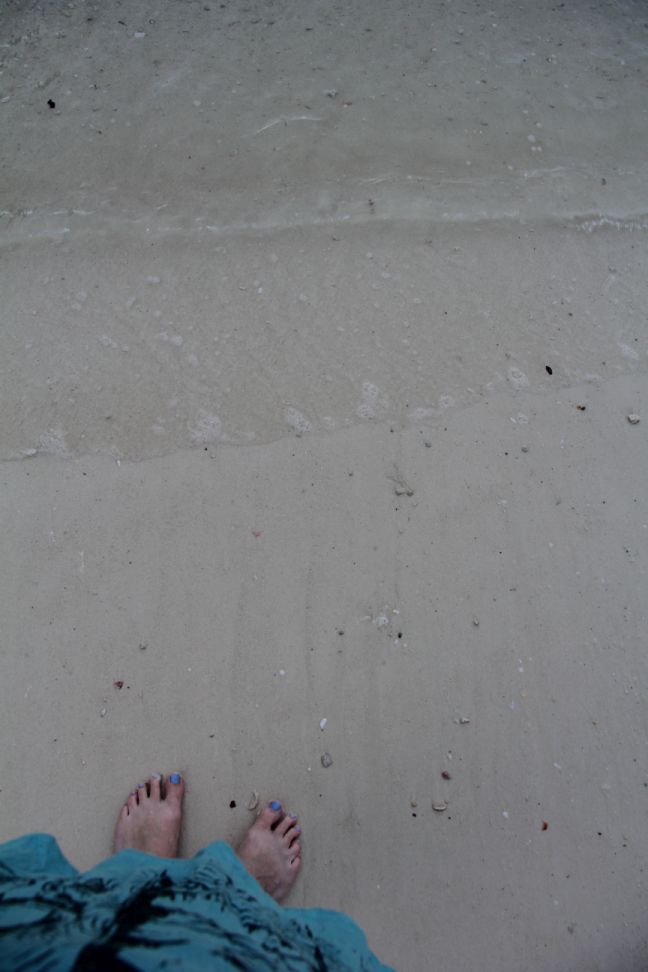
For the first time, there has been a total number of zero posts on this blog since I posted my last yearly reading list. Oh well.
One way to realise just how many books you own is to have to move them all so that your apartment can be painted and re-carpeted. Turns out I’ve got a few (this is only some of them):
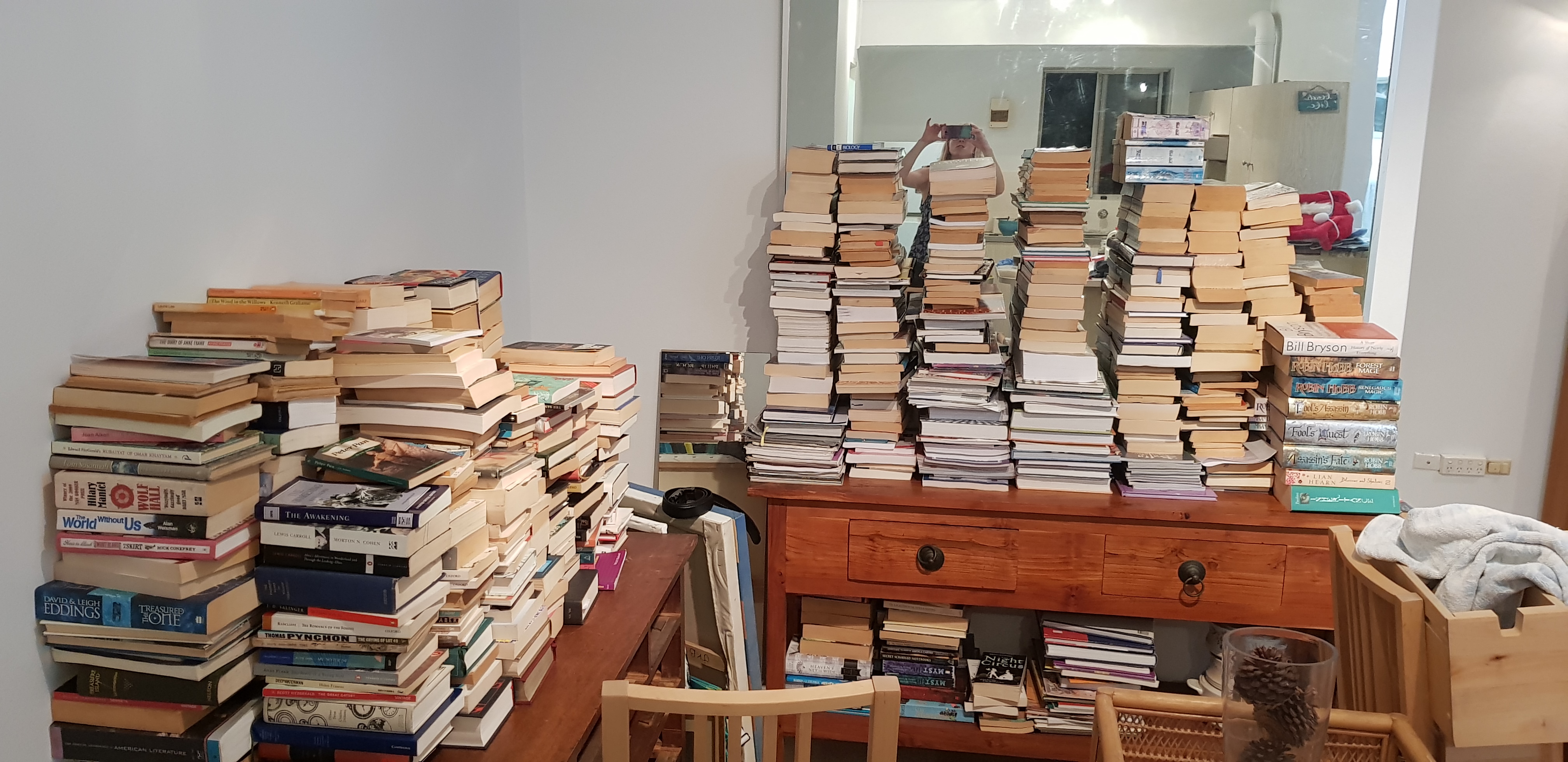
But I now have a nice little reading nook set up:
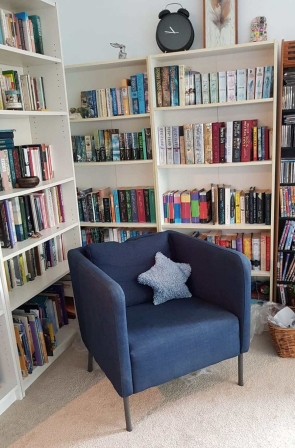
On to the stats!
This year I read a total of 36 books (and in November, I wrote (the draft of) one – does that count?? Probably not for these purposes). 25 of these were by female authors (though a couple of these authors had male pen names). There were a handful of essays and non-fiction titles, and a couple of classics which had been on my to-read list for a while. Here they are!
1. Unsheltered by Barbara Kingsolver
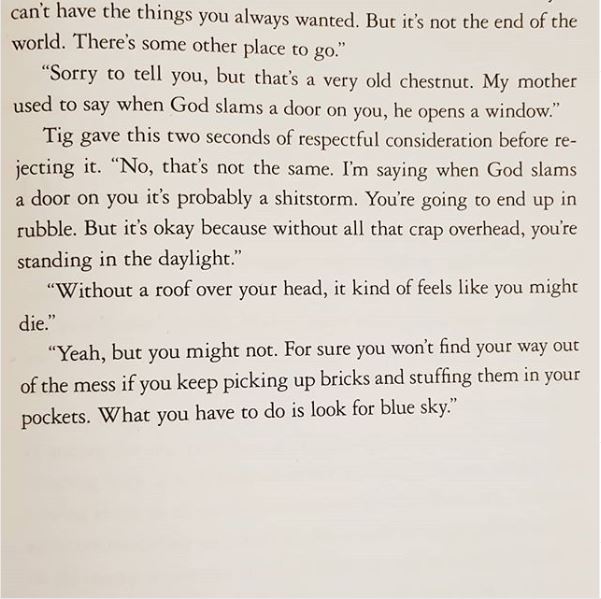
Book of the year award!
It seems silly for the very first thing I read this year to also be the best thing, but I’ve literally never read a book that was more utterly perfect for the time in which I read it. It aligned with what was happening in my life in a way that was deeply uncanny and yet very cathartic. It’s about what happens when everything crumbles down around you – the roof over your head, the future you thought you’d have, the constants that you relied upon. I literally read it with rain leaking in under the tarpaulin covering the smashed roof of my childhood home.
Everything was in pieces.
I spent 2019 standing in the daylight, looking for blue sky.
2. A Dodo at Oxford: The unreliable account of a student and his pet dodo by Philip Atkins & Michael Johnson
This book was totally silly and I really enjoyed it. A fictitiously ‘found’ piece of literature in the form of an old diary, it was packed with footnotes and illustrations and Oxford trivia.
3. Wrack by James Bradley
Very beautifully written, but falls into the capital-L-Literary category of ‘middle-aged men having affairs’. In hindsight this wasn’t surprising, as I found out that the book was heavily inspired by The English Patient. I’d highly recommend Clade by the same author instead.
4. The Silkworm (Cormoran Strike #2) by Robert Galbraith
Carrying on from when I started the series late last year. The thing with good crime fiction is that I absolutely tear through it and then could not tell you a single thing about what happened in it. So….. *shrug*
5. Tell The Truth, Shame The Devil by Melina Marchetta
This was technically crime fiction, but still memorable, because Marchetta writes amazing and lovable characters. Of all of her books I’ve read, this one was probably the most different, but still recognisable in the pure love for humans that shines through the story. I thought maybe for the first time in my life I’d get through a Marchetta book without crying, but she got me in the penultimate chapter.
6. Middlemarch by George Eliot
I acquired a biography of George Eliot at a book sale last year and thought I should probably read some of the source material before reading about her life. I came across a lovely hardback boxed set of the two volumes of Middlemarch on my Gran’s shelves, and borrowed these. It took me a month to get through it (at 904 pages long, it is the longest thing I read this year, in my defence), and there were parts that dragged a little, but overall I enjoyed it. It’s amazing how relatable something written a century-and-a-half-ago can be.
7, 8, 9 & 10: All Systems Red, Artifical Condition, Roque Protocol and Exit Strategy (The Murderbot Diaries) by Martha Wells

After Middlemarch I needed something short, sharp and punchy, and this quartet of novellas hit the spot perfectly. Murderbot is an androgynous, socially awkward and perpetually kind of grumpy security android that has gained free will but would rather watch TV than have to deal with life or other human beings. This character is way too relatable, and the plot is a page-turner (I think I finished each novella within a day, or maybe across two days at the most).
11. The Overstory by Richard Powers
This book opened my eyes and make me look at trees with a whole new appreciation, not just while I was reading it but for lingering months afterwards as well. A large cast of characters whose stories slowly but surely converge over the course of the novel; it’s a story of nature and of conservation, which suggests a slightly bleak answer to the question of “what can one individual do to save the planet?” but (without wanting to spoil anything) doesn’t quite stick to its guns with the ending.
12. The Place on Dalhousie by Melina Marchetta
Another Melina Marchetta classic, it desperately made me want to re-read Saving Francesca and The Piper’s Son as a lot of characters from that earlier novel re-appear peripherally in this one (in fact, I may read them again over this summer). The Place on Dalhousie was set very close to the area in the inner west where I used to live, and I love reading stories set in familiar places. It makes the characters feel even more real, like I could have walked past them on Glebe Point Road.
13. Gravity is the Thing by Jaclyn Moriarty

This was released the same week as Marchetta’s The Place on Dalhousie, which filled me (and my 15-year-old YA-loving self) with absolute joy – I’m so lucky to have some of my favourite teenage authors still publishing books half of my lifetime later. Gravity is technically Moriarty’s first ‘adult’ book, although it kept all of the lovable whimsicality of her other work, just with more internal monologue about sex (this is pretty much how I’ve aged into adulthood so it seems accurate). It’s about loss and learning to fly.
14. Packinko by Min Jin Lee
A multi-generational saga about a Korean family in Japan, I found this compulsively readable. It’s set in a time and place in history that I knew very little about, so it would have been fascinating anyway, but it was the characters that really made it for me.
15. Storyland by Catherine McKinnon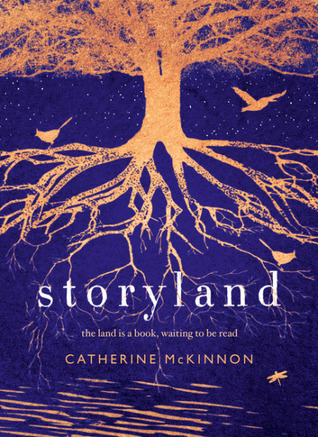
Such a pretty cover. Such a pretty title. I believe that the multiple-related-stories structure of this book was directly inspired by David Mitchell’s Cloud Atlas, and what’s not to love about a Cloud Atlas set in Australia?? Nothing, that’s what. I loved all of it.
16. Boy Swallows Universe by Trent Dalton
This was an acid trip in book form and made me perhaps even more slightly scared of Queenslanders than I was before. I don’t know what else to say about this book, but the previous sentence makes it sound like I disliked it, which was not true at all – it was excellent. But….. it was a trip.
17. Upstream: selected essays by Mary Oliver

The world lost Mary Oliver early in 2019 and it was a loss I felt keenly, as she’s one of my absolute favourite poets; ‘The Uses of Sorrow’ and ‘The Journey‘ were guiding lights of my 2019 experience. I got the library to order in her book of essays published just a few years ago, and found more of her there in prose format. In one of her essays, she writes: “You must never stop being whimsical.” So I hope she would approve of the name of this blog.
18. Career of Evil (Cormoran Strike #3) by Robert Galbraith
This was the Galbraith book that officially jumped the shark for me (sorry, JK). I can’t remember exactly how the whodunnit part was resolved, but I remember it being very unsatisfactory, and the two main characters finally and utterly exhausted my will-they-won’t-they patience. That kind of romance really irritates me, particularly when it’s not well done. No more Cormoran Strike for me.
19. 1492: The Year Our World Began by Felipe Fernández-Armesto
I picked this up randomly in the library returns room (perhaps I need a new category for this list – Returns Room Reads?) because the cover and the blurb looked interesting. The premise is that the world became recognisably the modern world we know now in and around the year 1492, and the author visits each major civilisation around the globe to see what they were up to at that point in time. I wanted to read this because a) I’ve always felt my historical knowledge has been sorely lacking and it’s kind of a global highlights whirlwind tour and b) I’ve played too much of Sid Meier’s Civilization games.
20. The Bean Trees by Barbara Kingsolver
This was Kingsolver’s debut novel, and while I didn’t enjoy it as much as some of her later work, it was still remarkable for a first novel. Some people are just so talented it’s rude. It has a very 80s-ish vibe, and the way the main character just kind of accidentally adopts/kidnaps a child was… a bit odd. But I guess the 80s were weirder times.
21. All Over Creation by Ruth Ozeki
I had somewhat conflicted feelings about this book – the main character as a young teenager has sex with her school teacher and is kicked out by her parents, then comes back to her hometown when her parents are elderly and… rekindles a relationship with the same teacher? Even though she is well aware that it was totally messed up in the first place and it’s an incredibly stupid thing to do? I dislike it when supposedly smart characters make deeply and obviously stupid decisions. But somehow, I ended up liking this book quite a lot (which means it must have done an excellent job, to overcome my initial misgivings). With its van full of hippy environmental protesters, it reminded me somewhat of The Overstory.
22. Little Fires Everywhere by Celeste Ng
I got this book out of the little local library when I was on holidays in far-north Queensland and read it almost entirely on the beach, which is a nice backdrop for any sort of reading. The books starts at the end – with a burned-down house and a missing (presumed arsonist) daughter, and then goes back to fill in the blanks. It was good, character-driven, though not hugely memorable (though perhaps the details have just trickled out of my brain due to holiday haziness).
23. Circe by Madeline Miller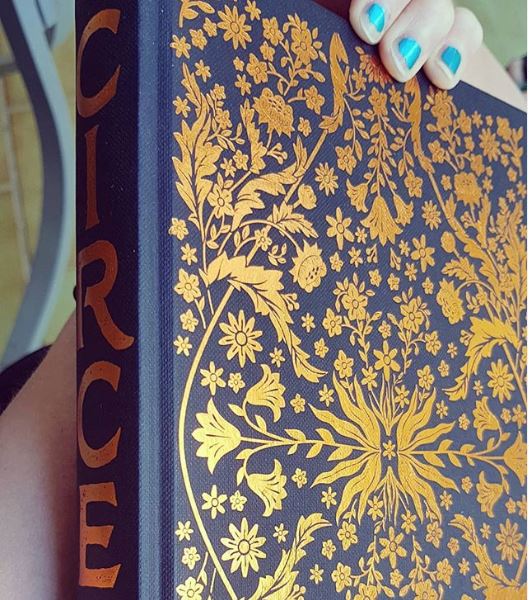
*Favourite Bookcover Award!*
SO. SHINY.
I’d heard a lot of buzz about this book and always enjoy good re-tellings of myths and legends, especially humanising/feminist ones, especially about witches – and the figure of Circe from Greek myth is one of our foundational witches. The fact that the cover was super-gorgeous just guaranteed that I was going to read it. Not just a shiny cover; the contents as well were excellent, and I now want to get my hands on other tales by this author.
24. The Library of Unrequited Love by Sophie Divry
This was given to me as a gift and should have been right up my alley, being a short monologue by a fictional librarian all about libraries (and love, theoretically). Unfortunately, the narrator is an old-fashioned member of the stereotypical old guard of librarians, the ones that hate people and think libraries should be silent all the time (and resent the fact that that’s not 100% of a modern library’s purpose any more). If you have a librarian friend, don’t give them this book – unless you want to be subjected to a rant about how out-of-date and irrelevant old library stereotypes are.
At least it was short.
25. Books that Saved My Life: Reading for Wisdom, Solace and Pleasure by Michael McGirr
Now this was the kind of writing about books that I could really get behind. There is something Alberto Manguel-y about the way Michael McGirr writes (judging by this book anyway – I haven’t read anything else by him yet); I think he could write about almost anything, and I would find his insights interesting. It’s basically 40 personal essays based around different books. It added a few things to my to-read list (as if that list needed to be any longer).
26. Paradise Lost by John Milton
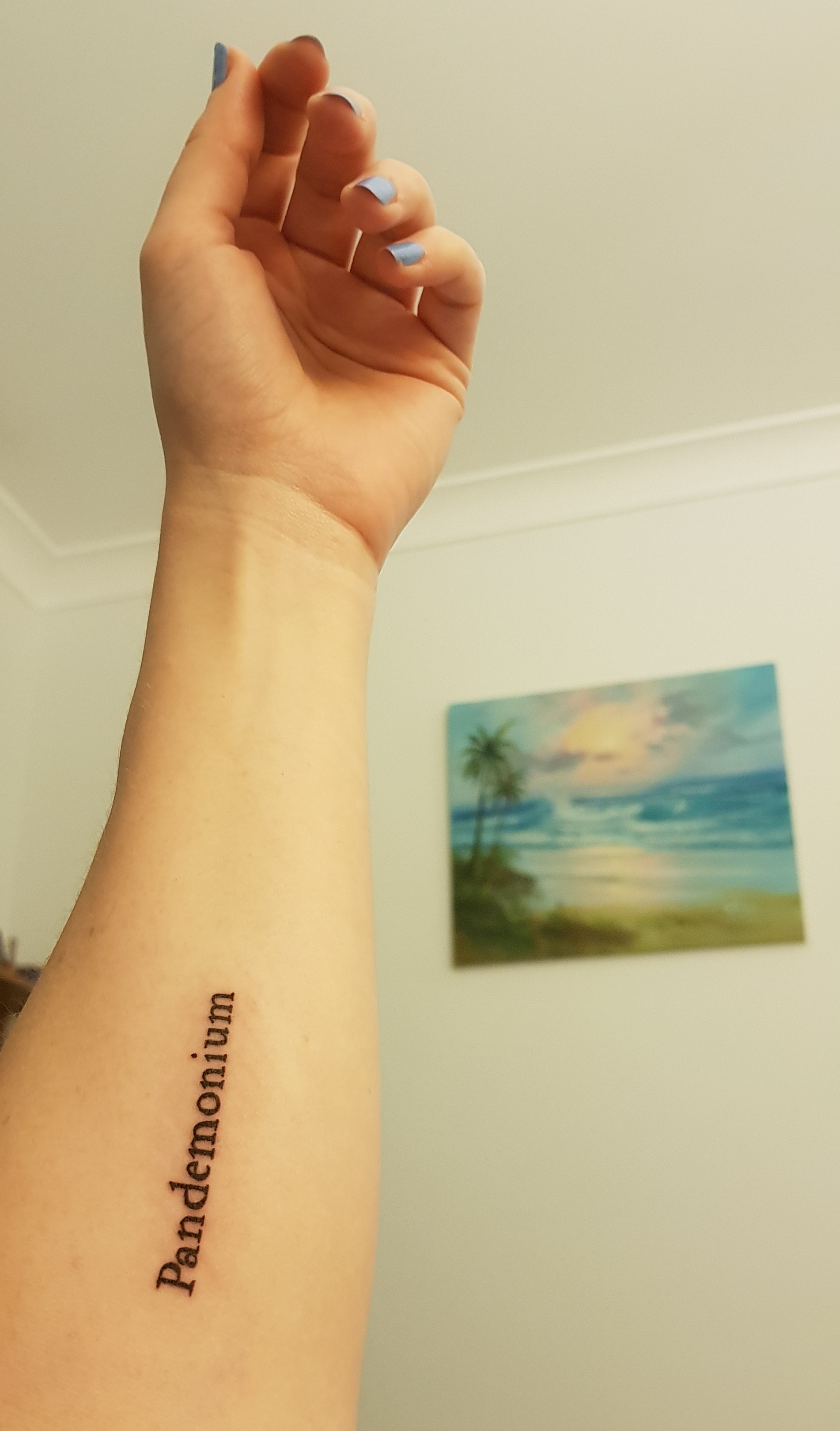
Because of Reasons, I wanted to get a tattoo this year. I knew that I wanted it to be ‘Pandemonium’ so I figured if I was going to permanently ink a word from Paradise Lost on my body, I’d better make sure I read the source material before I did so. I’d been meaning to read this 17th Century epic poem forever anyway – ever since I found out that Philip Pullman’s His Dark Materials was very much inspired by (and the title taken directly from) Satan’s whacky -fun-time adventures being a freedom fighter trying to overthrow God the tyrant. Interpretations of this Biblical story may vary, but everyone knows that Milton accidentally(?) made Satan the hero of the tale.
Better to reign in Hell, etc.
Embrace the pandemonium.
27. Monuments by Will Kostakis
I went to a delightful YA author talk this year at the Kinokuniya bookshop in the city, which was held a day or two after Monuments was released. Will Kostakis said that growing up he always wanted to read about dragons and fantasy beings in Sydney, and as this was something I always wanted as well, I thought this new book would be perfect. I think it’s aimed at slightly younger readers than I was expecting, or perhaps just a somewhat less literary style (than The Sidekicks, the other novel by this author that I’ve read), so it didn’t really grab me.
28. Hope Nation: YA Authors Share Personal Moments of Inspiration edited by Rose Brock
I bought this collection at the same YA author talk as I was particularly in need of hope and inspiration this year. The author of the first essay in the set wrote about attending the Women’s March in the U.S. just after the election of Donald Trump, and how rejuvenating it was (even in terrible times) to be with a massive crowd of like-minded people all standing up for what they believed in, finding joy in that protest. This directly inspired me to attend the Global Climate Strike in September – and I did find joy in it. This would be a great collection of essays for anyone, but particularly for young readers/teenagers growing up in this particular political age.
29. The Wolf in the Whale by Jordanna Max Brodsky
A fantasy story based on a combination of Inuit and Viking mythology, with a really interesting main character. I bought this a bit at random based on reviews, and was very glad I did. It’s very different to your typical fantasy novel, which I really liked.
30. Night Waking by Sarah Moss
Oof, this was a hard read. Which is not at all to say that it wasn’t a good book – but Sarah Moss often writes about the challenges of motherhood and post-natal depression. In this book she adds in miscarriage, sexism and an infuriatingly useless husband into the mix. She writes beautifully but it’s enough to put anyone off having children, ever. I did wonder why the main character put up with so much from all the men around her, from her husband to the police officer who kept calling her ‘Mrs X’ instead of ‘Doctor Her Actual Name’, no matter how many times he was corrected. It made me rage quite a lot.
31. Simon vs. the Homo Sapiens Agenda by Becky Albertalli
Another YA I picked up from the author talk mentioned previously, this is a high-school coming out story with a lovable bunch of characters and a high school drama group. It’s interesting to read YA these days and see how authors are including phones and social media as part of the story (I feel like this is something I’d really struggle with if I ever tried to write a YA novel).
32. The Blind Assassin by Margaret Atwood.

Margaret Atwood’s first Booker Prize-winning novel had been sitting on my to-read shelf for a little while, and I coincidentally was about halfway through it when it was announced that she was a joint winner again for The Testaments. The Blind Assassin was one of the best books I read this year. This was a perfect end-of-an-era quote (that also tied back in my mind to Unsheltered):
“So much for the twentieth century, we say, as we make our way upstairs. But there’s a far off roaring, like a tidal wave racing inshore. Here comes the twenty-first century, sweeping overhead like a spaceship filled with ruthless lizard-eyed aliens or a metal pterodactyl. Sooner or later it will sniff us out, it will tear the roofs off our flimsy little burrows with its iron claws, and then we will be just as naked and shivering and starving and diseased and hopeless as the rest. […] But why bother about the end of the world? It’s the end of the world every day, for someone. Time rises and rises, and when it reaches the level of your eyes you drown.”
33. The Secret Commonwealth (The Book of Dust, #2) by Philip Pullman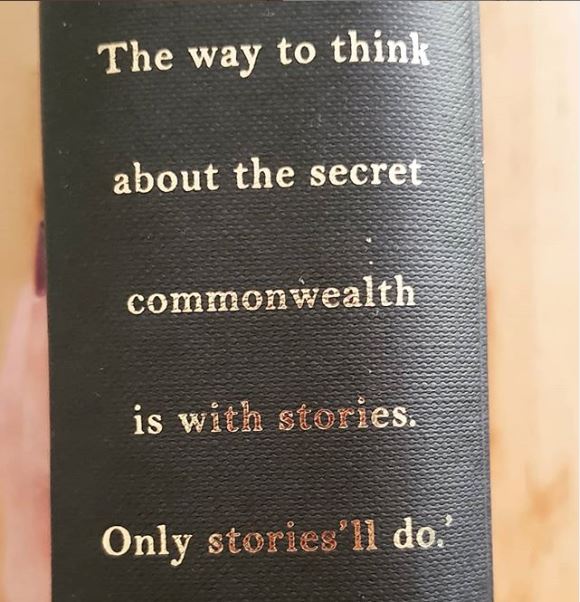
Okay. You guys. I’m going to struggle with this. But (I’m going to say it, even though it hurts), this book was the disappointment of the year and maybe of my lifetime. I’d been waiting to read about a grown-up Lyra ever since I read the His Dark Materials trilogy as a pre-teen. That series had a massive impact on my formation as a human and the things that I believed about the world.
And you would think with an emphasis on stories and story-telling (like the embossing on the spine of the book), this should have been perfect for me. Instead, in this book Pullman utterly trashes the whole concept of rationalism by absolutely, ludicrously misrepresenting it.
I could go on for many more paragraphs about how upset and annoyed and betrayed I felt by this book and what it did to Lyra’s character, but I won’t. I’m just hoping that Pullman manages to pull off a spectacular reversal in the upcoming final book of the new trilogy (but I’m no longer holding my breath).
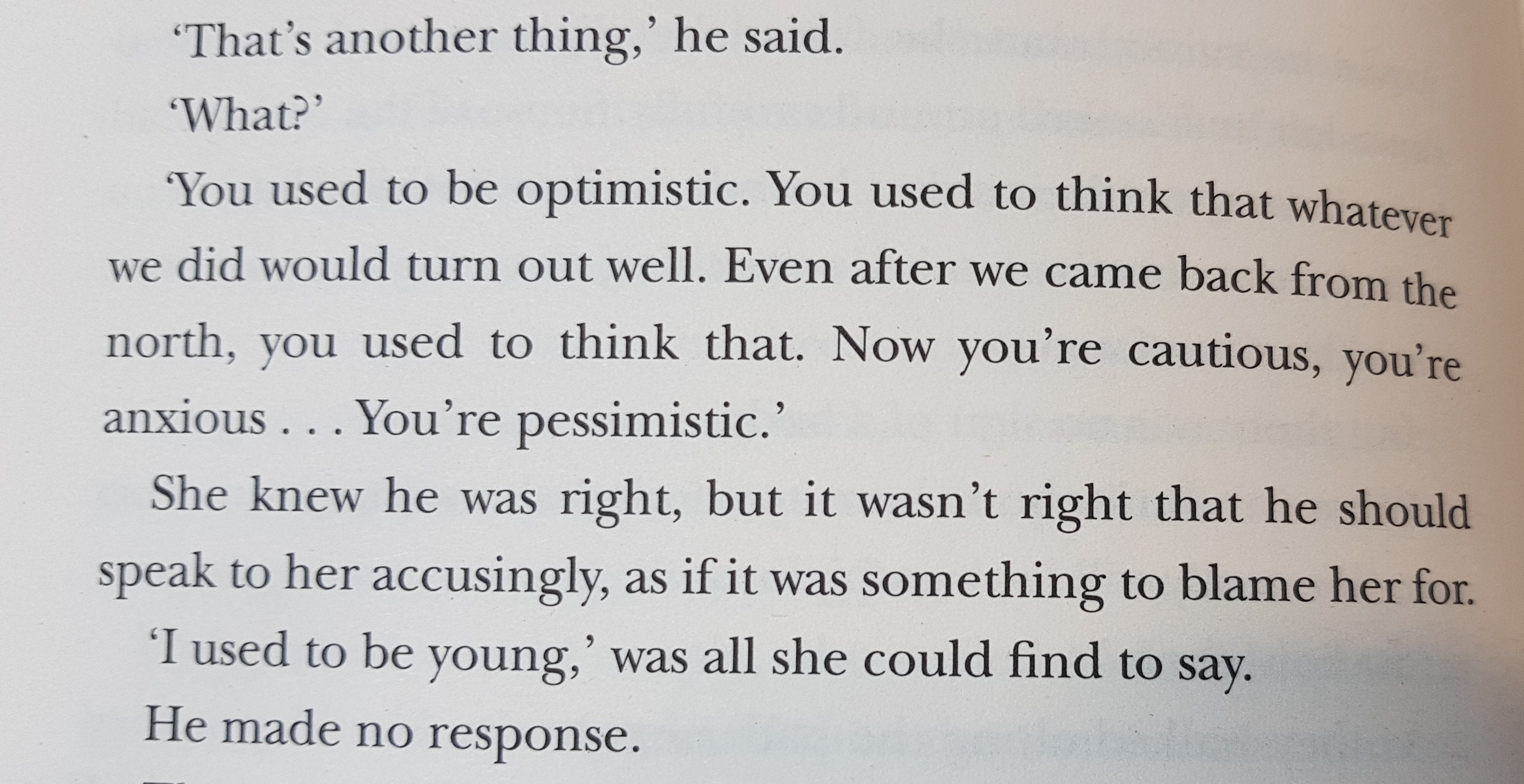
34. No Plot? No Problem!: A Low-Stress, High-Velocity Guide to Writing a Novel in 30 Days by Chris Baty
In November 2019, I wrote 50,000 words of a novel draft for Nanowrimo, so I didn’t really have time to read any fiction that month – but I did re-read through the founder’s guide on express-novel-writing, which is hilarious and packed with useful tips such as this one:
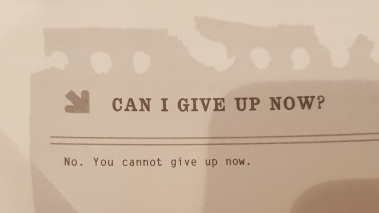
35. The Long Way to a Small, Angry Planet by Becky Chambers
Bec recommended this to me over a year ago (at least), so I figured I’d made her wait long enough and I really should get around to reading it (even though she’s never read my #1 recommendation of Cloud Atlas despite years of encouragement. Boo.) This was the best kind of space opera, with zany characters, alien species, and honestly not that much plot – but it didn’t need it because it was full of humour and heart instead.
36. High Tide in Tucson by Barbara Kingsolver
I rounded out this year back where I started (… except so, so far from it) with a book of essays by Barbara Kingsolver. This quote is everything:
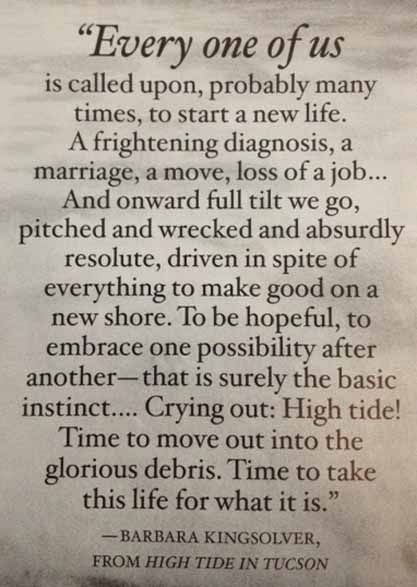
.
High tide, my friends. Welcome to the new decade.
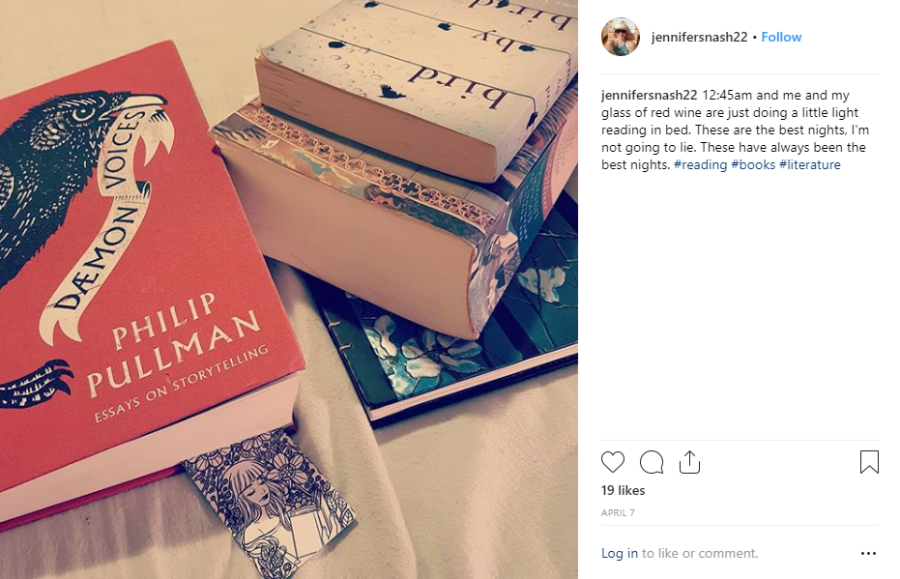
What a goddamn year this last one was, hey? This is a little delayed due to the unrelenting chaos of the end of my 2018, and so much has happened that I find my memory of a lot of these titles somewhat hazy, but I’ll do my best to recap.
I have read a total of 38 books this year. Some random stats:
On to the list!
1. The Hours by Michael Cunningham
Being a big fan of Virginia Woolf and Mrs Dalloway, I was interested in reading this (I haven’t seen the movie of it). It was quite beautifully written, a good tribute to Woolf. Don’t remember much else about it! Except I felt for the 50s housewife who drove away from her husband and young child to go hide out in a hotel and read books all night…
2. The Poisonwood Bible by Barbara Kingsolver
Barbara Kingsolver is my author of the year. It’s not the first time I read her, but this year her reputation has solidified for me as someone who I must read absolutely everything of. The Poisonwood Bible is about a family with four daughters in the Congo during the 60s, and apart from being an amazing and emotional read it also taught me a lot about the country and the time period and America’s interference in international affairs. I’m one of those people who pretty much only gains historical knowledge through reading fiction.
3. Nausea by Jean-Paul Sartre
I’ve always wanted to read Sartre ever since a character in Secret Scribbled Notebooks raved about him, but sadly I was not a fan. The writing was not particularly interesting and, well, the main character’s existential philosophy seemed to boil down to ‘I’m a middle-class white man in my mid-20s and I’m so much smarter than everyone else around me and no one understands me’. Very much like if That Guy In Your MFA wrote a novel.
4. Dancing at the Edge of the World: Thoughts on Words, Women, Places by Ursula K. Le Guin
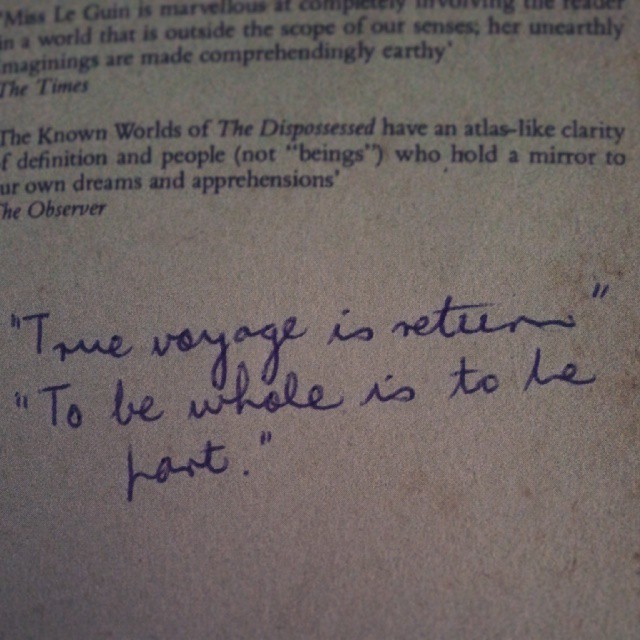
I was very upset that the world lost Ursula K. Le Guin in 2018. I read The Earthsea Trilogy as a child and it has always stuck with me. She is also one of my Gran’s favourite authors and so I was sad on her behalf. I’d long been meaning to pick of some of Le Guin’s ‘writing about writing’, so I got this out of the library. As well as interesting essays it had some great road trip poetry in it.
And it’s not from this collection, but I also want to share the first stanza of this: Poem written in 1991.
5. The Natural Way of Things by Charlotte Wood
I saw an author talk with Charlotte Wood in Gleebooks a while ago, and enjoyed it enough that I bought the book as a gift for my Mum and then got the book out of the library for myself. It’s a weird, gritty, confronting story about a group of women imprisoned for mysterious and misogynistic reasons in a remote country compound. I did find it very hard to believe that these women never seemed to consider banding together and taking out their three captors, (who they greatly outnumbered and who did not seem to have serious weapons of any kind), and never even attempted to escape (???). But gradually it drew me in further and further and I found myself embracing the story, until…….. an irritatingly inconclusive ending. Argh.
6. The Secret Life of Bees by Sue Monk Kidd
I should have a special bookshelf for ‘I Read This as a Kid and it’s Still As Good As I Remembered!’ books, because they are such a joy. This book is like a honey-scented hug. It was an interesting re-read because when I first read it, I knew and understood almost nothing about the context of the story (South Carolina in the 60s). But it’s a beautiful coming-of-age story about a girl who scribbles in notebooks. I have a type. ❤

7. Daemon Voices by Philip Pullman
A richly-bound and engraved red hardcover full of Philip Pullman’s essays on writing. He is the purest ‘storyteller’ that I know, and his passion for his craft shines through in everything he writes.
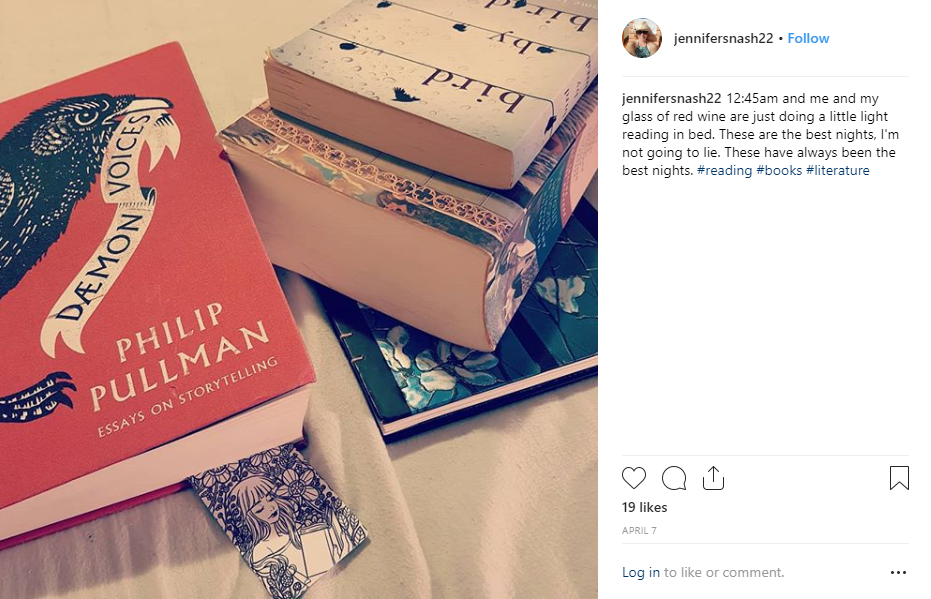
8 & 9: Gemina and Obsidio (The Illuminae Files, #2 & #3) by Amie Kaufman and Jay Kristoff
I read book one of this series, Illuminae, back in mid-2017 and described it as a ‘space-opera-zombie-thriller-hacker extravaganza’. Books 2 and 3 of this trilogy continue in the same vein and add pulpy-romance-scifi-alien-horror and probably a few other glorious descriptors that I haven’t yet thought of. The most page-turny page turners I’ve read in a while. Plus, I recommended the series to Bec and thus had the enjoyment of reading her outraged and sometimes traumatised reactions via text message (she loves my recommendations, really):
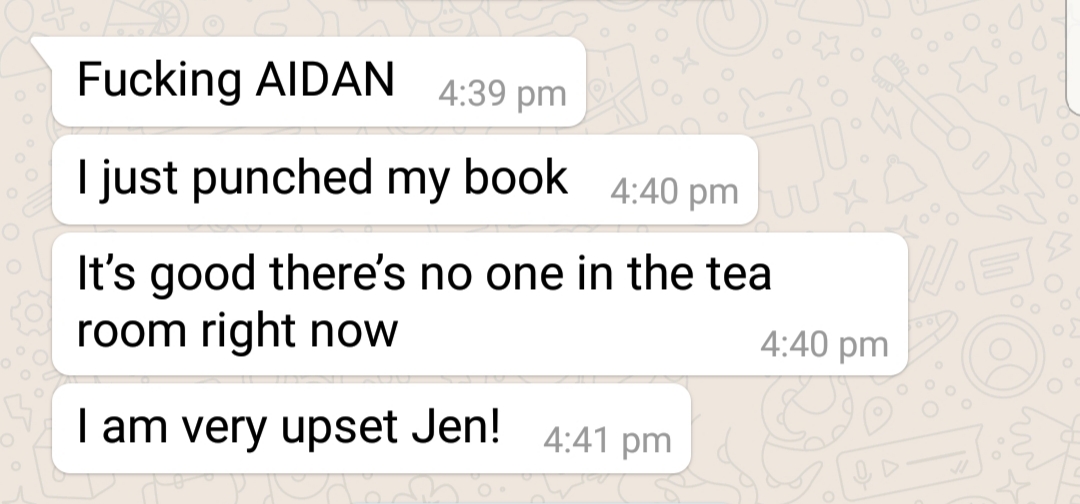
10. The Eye of the Heron / The Word for World Is Forest by Ursula K. Le Guin
Two separate novellas by Le Guin which I picked mostly at random from her sizable back catalogue of stories. She was an amazing author of the best kind of thought-provoking science fiction – somehow very different in tone and approach to any other scifi I’ve ever read. Her stories quietly question everything about established world orders – masculinity, violence, conquest, power – without ever feeling like they’re hitting you over the head with a big stick of sanctimoniousness.
11. Harry Potter and the Cursed Child: Parts One and Two by Jack Thorne
This book wins my ‘Golden Raspberry’ award for the year.
It was truly and almost uniformly terrible. Indistinguishable from bad fanfiction.
Luckily, it had been out for a good while before I got around to reading it, so I had my expectations appropriately lowered in adavance. Thus I didn’t suffer too much disappointment from this glimpse into the future of the wizarding world.
Maybe it’s better on stage? Who knows.
12. We Are Okay by Nina LaCour
I picked this one up because of the cover. A coming-of-age YA romance between two girls, that slowly unravels a backstory to explain the current mysterious situation. I quite like this narrative format but this book sure does make you wait for it, and I’m not sure the payout was quite worth the suspense. But it was a sweet little book with understated but beautiful prose.
13. The Blue Cat by Ursula Dubosarsky
I really enjoy Ursula Dubosarsky’s writing for kids, as it’s somewhat darker and quirkier than your average YA fare. I also visited Luna Park shortly after reading it (it’s a featured location in the book), and found myself absent-mindedly looking for a blue cat everywhere.
14. Paula by Isabelle Allende
This is a book that I read in high school (year 10 I think it was?) which I really enjoyed, and strangely almost everyone else in my class disliked. It had a lot of parts that I didn’t remember very well (lots about Chile, and various love affairs that the author had over the years) and plenty of parts that I did remember, about death and loss and grief. “Silence before birth, silence after death; life is nothing but noise between two interminable silences.”
15. Willow Tree and Olive by Irini Saviddes
This is a YA coming-of-age story about a Greek-Australian girl. The main character almost immediately put me off when in one of the first chapters, she laughs at a white waiter/caterer being upset about their plates getting smashed at a Greek wedding. Being annoyed by the destruction of your property makes you a clueless white person? Hmmm okay then. My opinion of the character never quite recovered from this setback. Which is a shame, because I really like the other book I’ve read by this author.
16. Origin Story: A Big History of Everything by David Christian
I’ve seen David Christian give a presentation on Big History and he is an excellent speaker, so I thought I’d read the source material. I really like his over-arching approach to science as being an ‘origin story’, a story that we use to make sense of our world and our place within it (since many of us don’t use religion for this sense of meaning any more).
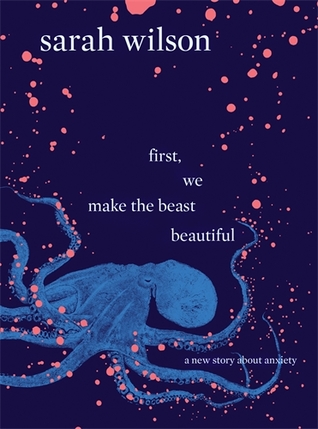
17. First, We Make the Beast Beautiful: A New Story About Anxiety by Sarah Wilson
I wanted to read this book because of its pretty cover. However, from the perspective of a person who is lucky enough not to suffer from anxiety, I think I still don’t understand ‘The Beast’.
That being said, it does get my personal Book Cover Design Of The Year award! (I’ve decided to make this a regular thing.)
18. Begin, End, Begin: A #LoveOzYA Anthology by multiple authors
This is a collection of YA short stories from Australian authors, and it reminded me how incredibly lucky I am to have grown up reading excellent fiction by local writers. As a teenager there was nothing like the thrill of reading a story and finding out that the characters hung out at all my local haunts. From this collection, it looks like young Australian readers these days have even more of a smorgasbord to feast from. A lot of my enthusiasm for Australian fiction this year came from this book!
19, 20, & 21: Ancillary Justice, Ancillary Sword, and Ancillary Mercy – The Imperial Radch Trilogy, by Ann Leckie
Book one of this trilogy was a re-read for me, as I originally read it a while ago and couldn’t remember enough to confidently go on with the rest of the trilogy. Like most excellent science fiction, it dumps you in a vastly alien universe and story and it takes a little while of furious concentration to get your mind around what is going on. My favourite thing about this series is the (almost tangential) fact that gender is not an important signifier in Radch society and almost all of the characters are presented as gender-ambivalent. Additionally, the main character is a ship’s AI split into multiple bodies – so not even close to human, let alone gendered. And yet, the writing is so good that after half a book of figuring out what is going on, Breq is just Breq. She’s probably the most unique character I’ve ever read and I love her.
22. Confessions of a Young Novelist by Umberto Eco
I picked this up because I really enjoyed The Name of the Rose and Eco is known for his literary musings as much as his fiction. This was a collection of talks and essays he’d written. Nothing particularly jumped out at me or blew me away, though.
23. The Lacuna by Barbara Kingsolver
Book of the year award! Yay!
The main character of this book is a writer (amongst other things), and it was utter perfection. Authorship, censorship, art, life, and Frida Kahlo. What’s not to love? Kingsolver tackles huge ideas in the most readable format. She says, “A novel is like a cathedral, it knocks you down to size when you enter into it”, and that’s exactly my experience with her fiction. It takes my breath away and at the same time inspires me. I think it’s exactly the kind of fiction that I would aspire to write one day (you know, in my wildest dreams).
24. The Only Harmless Great Thing by Brooke Bolander
A short but piercing tale of radioactivity and elephants. Beautifully strange and full of a burning anger that is both alien and very familiar. This one is very hard to summarise. Definitely the weirdest thing I read in 2018 (in a good way).
25. A Canticle for Leibowitz by Walter M. Miller Jr.
I picked this up because I kept running across the title in /r/books and countless people seem to adore it. It won the Hugo Award in 1961 and I am a bit fascinated by science fiction written in that era, since it always feels like a such an odd combination of futuristic and retro/dated. Often because humanity is flying around on spaceships but women are still making the coffee and being good girls. (This novel avoided that issue by having almost no female characters at all). It’s about both humanity’s ever-reliable self-destructive tendencies, but also about its stubborn willingness to rebuild and treasure knowledge and learning. A very funny and tender book about the end of the world.
26. Walking Towards Ourselves: Indian Women Tell Their Stories by Catriona Mitchell
A collection of autobiographical writing by a diverse group of Indian women. The range of experiences within this collection really reflects the extremes of India’s culture, from rich to poor, powerful to disenfranchised.
27. Rush Oh! by Shirley Barrett
For some reason, the main character of this book reminded me (in the best possible way) of Cassandra in I Capture the Castle – something about a tale told from the first-person perspective of a girl with a somewhat eccentric family and supporting cast. Rush Oh! is about a whaling family in New South Wales in the early 1900s. It’s quirky and warm-hearted and (of course) has a lot in it about whales, both the ones that are hunted and the pod of orcas who assist the whalers. Based on a true story!
28, 29 & 30: The Fifth Season, The Obelisk Gate, and The Stone Sky – The Broken Earth Trilogy by N. K. Jemisin
I read this trilogy on recommendation from friends, and also on the strength of the fact that the series won three consecutive Hugo Awards for best novel, three years in a row. That’s an impressive level of consistency. Set in a geologically unstable fantasy world of volcanoes and rifts and sinkholes, with a magic system based around the manipulation of geological energy. See, this is what I love about fantasy: the series is about prejudice and discrimination, but it’s also about cool floating crystals and mysterious ancient cultures. Good, solid, imaginative fantasy with a social conscience.
31. The Yearbook Committee by Sarah Ayoub
This book was trying very hard to be the next Melina Marchetta, but it just didn’t quite get there. I’m not sure why, as it followed the format closely – a group of unlikely friends and frenemies are thrown together (some against their will) to make up the school’s yearbook committee, and we get to watch the characters and their relationships develop over the course of the school year. All of the pieces were there, but the alchemy didn’t happen. The ending felt like it was trying to hard to have a big emotional impact, but I never quite bought it, for some reason.
32. The Adventure of English: The Biography of a Language by Melvyn Bragg
The history of the English language from its early roots to its modern-day permutations. The author was quite successful in making a language the central character of an adventure story, and it was very interesting and well written. Possibly even someone who’s not an English lit nerd would enjoy it!
33. The Secret Chord by Geraldine Brooks
I don’t read widely in the genre of historical fiction, but Brooks is an author that I’ve grown to trust implicitly with this type of story. The Secret Chord is the story of King David (of Goliath-slaying-fame) from his childhood to his death. Not my favourite from this author, but still very readable.
34. The Cuckoo’s Calling by Robert Galbraith
Long before J.K. Rowling ever even finished the Harry Potter series, I always said that if she were to go on to write something else, it would be crime fiction. Again, not a genre I usually read in, but I trust the author’s ability to lay a satisfying trail of breadcrumbs, and I wasn’t disappointed.
35. Bridge of Clay by Markus Zusak
A weighty book in many ways – physically (it’s a doorstopper), emotionally (you will cry), chronologically (it has been long-awaited, and it took Markus Zusak over a decade to write). It’s also set in Sydney, which I love. There’s so much affection for the area soaked into every word of the story. It’s the tale of five brothers (and a small menagerie of pets) and of their parents, so it jumps around in time quite a lot, and takes a while to really get going. But it’s most definitely worth investing the time and emotional energy and several boxes of tissues in.
36. The Second Cure by Margaret Morgan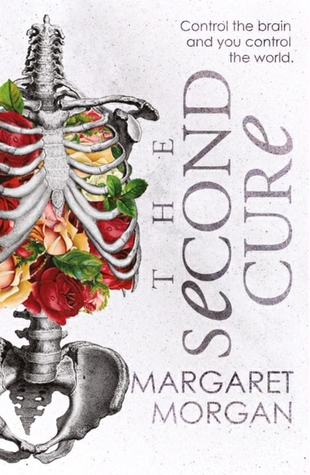
Not only is this set in Sydney, but the main characters are based literally in the next suburb over from mine. This was a pleasant but unexpected coincidence, as I picked it off the library shelf based on the cover and the interesting-sounding blurb. A pointedly contemporary pandemic story about a disease that has deeply political consequences, effectively splintering the world into the left/centre and far-right conservative movements. (Sounds familiar, right?) I wasn’t sure I liked the final ‘twist’ of the story, but with such a solid set-up and great characters it was difficult for it to live up to its promise. The extra juiciness of reading a political and scientific thriller set in my own backyard more than made up for this, though.
37. A Very Unusual Pursuit by Catherine Jinks
I read Catherine Jinks’ Pagan Chronicles in high school and they were gritty and compulsively readable YA, so when I bumped into this on the library shelves, I thought I’d give it a go. This one is for younger readers, but still good. Urban fantasy set in Victorian-era London.
38. My Family and Other Animals by Gerald Durrell
I hadn’t read this book for almost 20 years, but it all came flooding back. An autobiography of the author’s time spent on the Greek island of Corfu when he was a boy. This re-read made me desperately want to visit the Greek Isles, and also reminded me that the book was a powerful source of my obsession with animals and nature and the ocean as a kid. Another book to thank for my biology major! I mainly remembered the book for all of the wildlife writing, but discovered on re-reading that the author’s writing about his family members is hilarious, something which I probably didn’t appreciate as much on my first read when I was younger. A perfect summer read.
(Thoughts prompted partly by the 2018 J.R.R. Tolkien Lecture by V. E. Schwab, which you can read here; also by attending the book launch of Leaf Stone Beetle by Ursula Dubosarsky & Gaye Chapman, published through Dirt Lane Press).
***
Even before I read C. S. Lewis’ Narnia, I always suspected there were doorways hidden in wardrobes. As a very young child I had recurring dreams about the secret passageways inside the walls of my house, which you could access from the built-in cupboards. As with many of my childhood dreams, the lines blurred between what was dream and what was reality, for me. In the same way that I was utterly convinced I could fly if I just tried hard enough, I knew that the secret passageways were there. I was so sure that it didn’t even occur to me to check while I was awake – I just knew. (Luckily, this same rock-solid certainty ensured that I never bothered to jump off the balcony to test out my flying skills).
Playing hide and seek by clambering up to the top of my parent’s closet (nose full of the smell of Mum’s clothes), I found tucked away in the back of the top shelf a short sword – an actual, freaking, curved-blade-in-a-leather-scabbard sword. This was an utterly unexpected find in our comfortable, quiet, suburban house – and yet not unexpected at all, because of course secrets are hidden in cupboards. Dad was probably a secret king of a fantasy kingdom and one day of course I would inherit the throne – there was probably a magical prophecy to that effect. I would probably get my own unicorn.
(Turns out the sword came from Afghanistan via carry-on luggage on a plane to Australia 20-something years previously. The 1970s were a very different time for airport security.)
***
I had a cubby on the top shelf of my own bedroom cupboard where I used to go to enjoy the view of the world from ceiling level – the next closest thing you could get to tree-climbing inside of the house. Hidden inside the top of the doorframe was a little wooden ledge that stuck out maybe a couple of centimetres, and here was where I stashed all of my tiny found treasures. And it is amazing what a four-year-old would consider to be a treasure; a lost button, a chipped blue-glass marble, a fuzzy silver ball from an early-90s craft kit, some sequins, old coins… etc.
I was thirteen years old when I first went to Bali, and I remember being absolutely captivated by the little offerings of woven palm and flowers left everywhere, on doorsteps, windows, alcoves – ordinary, everyday objects imbued with wordless magic. I knew nothing at all of faith or religious devotion or ritual in those days, and these little parcels of colour and scent held a powerful and mysterious fascination for me. They moved me, in a way I couldn’t explain to myself then and still can’t really articulate now.
I have always been unashamedly materialistic in this way: even before I had read Tolkien, I always knew that tiny objects (which are really tiny symbols) can hold great power. I can’t help it; I like stuff. Stuff holds stories, just like houses do. I am terrible at throwing things away, because I get attached to the most ridiculous junk. Recently I’ve discovered that there is a legitimate interior decorating trend called ‘maximalism’, which I’ve totally embraced. As a messy person by nature, it’s a somewhat accidental embrace, but I’m leaning in to it. Even if there was a door to Narnia inside my cupboard, I’d never find it through all of the stuff that’s in there.
***
It’s a different cupboard now; my childhood home is three bedrooms ago. I still hide tiny treasures about the place, but these days they are more often in the form of words scribbled down and tucked away, little shiny secrets that I get to hoard for myself.
Since my partner and I have our own place now, Dad told me it was finally time to clean out the last vestiges from my childhood wardrobe. I spent a day or two becoming tipsy and nostalgic with my Mum and some white wine, over boxes of old primary school workbooks and diaries and laughably terrible drawings (a visual artist, I most certainly was not). When the cupboard finally stood empty, recycling bin overflowing and a few too many boxes of things I couldn’t bear to part with stuffed into the boot of my car, Dad and I stood in my old blue bedroom and I told him fondly about my Secret Childhood Stash, having totally forgotten about it for the last two and a half decades right up until that moment.
He looked at me with a curious expression, and then reached up above his head into the cupboard (with the height I never inherited) to feel blindly along the inside lining of the doorframe. I didn’t say anthing, but I reached out, and into my two cupped hands he placed all of the shrapnel treasure of childhood, all still there, still waiting.
What a gift.
***
I’ve always been fascinated by the way that the stories you consume in your childhood will have a massive impact on your psche for the rest of your life. The cartoons I watched as a little kid are lodged permanently in my brain. But here’s the interesting thing: when I think of the things I watched as a child, it’s the darkness that I remember. The melancholy, the eerie, and the moments of deep, horrifying terror. Kids entertainment in the 80s and early-mid 90s was not afraid to be a rich source of Nightmare Fuel, true to its fairytale roots.
Don Bluth was a prime culprit of this in my childhood. Movies that you watch when you’re so young that you can barely remember if they were real or hallucinations; and then (thank god) the internet comes along and helps you to remember titles and find clips on youtube, and you’re like, okay, I was a pretty wimpy kid, surely it won’t be as freaky as I remem – oh holy shitcrackers.

Is that what ‘The Secret of Nimh’ actually looked like?
No wonder I had psychedelic nightmares.
Don Bluth films were a strange mash-up of sparkly, pretty, shiny stuff and pant-crappingly terrifying monsters with evil glowing eyes.
What do I remember from An American Tail? The shipwreck, the fear of a child that’s lost its parents, giant monsters that want nothing more than to eat you.
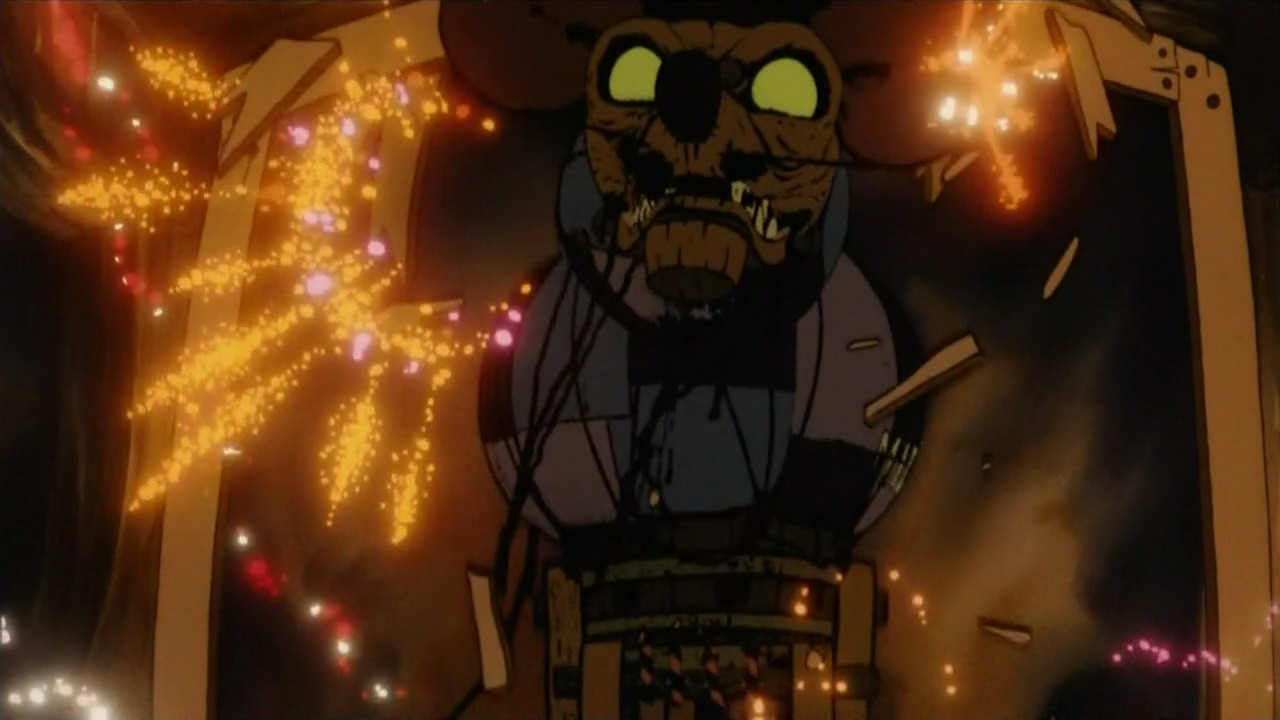
The main characters are small, terrified, often alone.
The Swan Princess was a soppy fairytale romance about a beautiful blonde, a dashing prince, whacky animal sidekicks, AND THIS GUY OMG WTF.

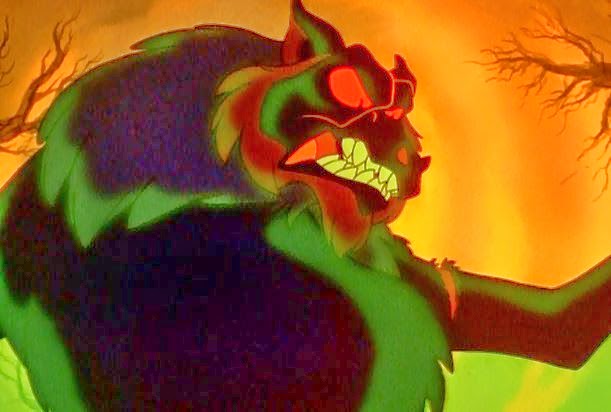
How about The Land Before Time? Cute baby dinosaurs! A bunch of friends! Road trip adventure movie! PARENTAL DEATH!

But Don Bluth was far from the only culprit. Everyone thinks of Disney as all fluffy bunnies and rainbows, but it still comes from the delightfully messed up source material of the Grimms Brothers and that darkness lurks just under the skin. Let’s not forget the ‘Night on Bald Mountain’ sequence from Fantasia, which I basically had to get mum to fast forward for me every single time I watched the movie (thanks mum).


Even in the golden age of Disney, it was the eerie and strange moments that really stuck in my mind. When I think of The Little Mermaid (still my favourite), it’s not the happy bounce of ‘Under the Sea’, the yearning of ‘Part of Your World’ or even the firefly-lit romance of ‘Kiss the Girl’ that I picture. It’s the darkness of Ursula’s cave, the moment when something reaches in and Ariel’s voice is pulled out of her, and then the body horror of transformation, woah, hello, adolescent anxieties, yikes.

For non-cartoon entertainment, some of The Weird admittedly also came from the exuberance of 1980s special effects: think anything that Jim Henson was ever involved in. The twistedness of some of those puppets is something that slick, modern special effects can never hope to capture.
The Neverending Story was another foundational movie of my childhood. If you grew up in the 80s or 90s, it’s almost certainly on your list of Movies That Fucked You Right Up In The Best Possible Way. I’m not just talking about the heartbreak of losing Artax in the Swamps of Sadness – the thing that’s stuck with me and continued to terrify me as an adult is The Nothing (embodied in the film by that other thing that gave me a deep and lifelong fear, the wolf).
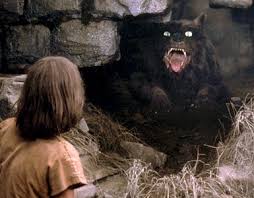
 I seriously debated on whether or not to include these pics cause they’re goddamn terrifying.
I seriously debated on whether or not to include these pics cause they’re goddamn terrifying.
The Nothing was the most existential and the greatest summary of all my childhood fears, the root from which all other fears ultimately grew. A fear of ‘nothing’ is fear of death, the void, lack of existence. In the film, specifically, The Nothing is linked to a lack of human imagination, a kind of obliteration that comes to our existence when we don’t use our minds. Has my lifelong obsession with stories actually stemmed from this threat? It’s possible. I sure didn’t want Gmork showing up at my front door to tell me I hadn’t been reading enough books.
And even though this wolf and The Nothing scared me down to my bone marrow, made me want to cry with fear, and gave me recurring nightmares… I wouldn’t have changed or missed this movie from my childhood for anything. It was one of the fictional building blocks that made me.
It’s the weird. It’s the dark. It’s the loss and the despair and the death.
Children need this.
It’s incredibly important.
The kids are alright. They’re better than alright, because fiction lets you explore heavy ideas in a safe and constructive way.
At night in my suburb
huge spiderwebs glimmer between the trees.
In the town square
on the green astroturf under the lights
a shoeless, shirtless man is doing yoga.
Dirty feet and a backpack on a bench.
It is 11pm and a warm breeze stirs my hair
And my eyes dart reflexively:
who is nearby, where I would run,
what’s the escape route,
If.
‘What a sad thought to have
on a pleasant summer evening’, I think.
The quiet voice inside me answers:
Women after dark are always ready to run.